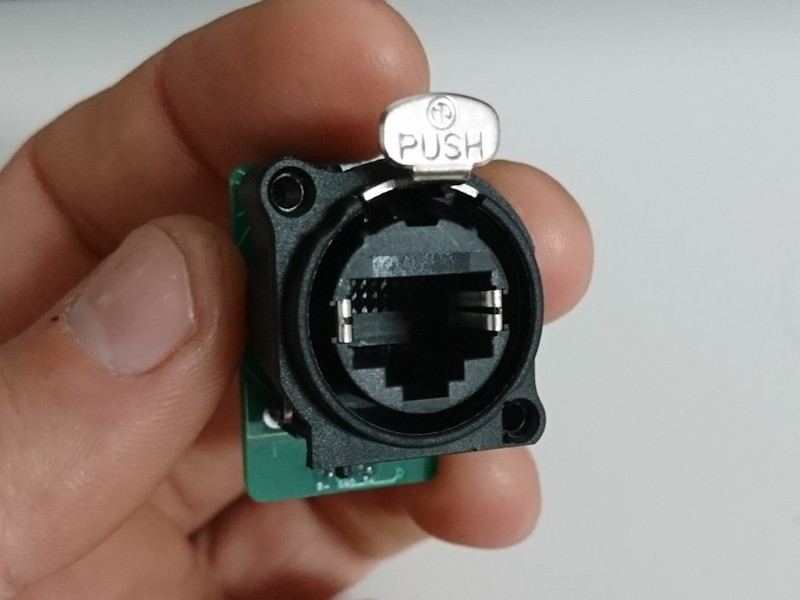Tom Magnier created this alternate Ethernet adaptor using using Neutrik etherCON adapter.

While the standard Teensy 4.1 board provides Ethernet via Ti’s DP83825I PHY, we didn’t want to increase the footprint and BOM with a big ol’ RJ45 MagJack, which is why we sell a separate Ethernet kit for users who wish to incorporate networking into their projects. But there are certainly other ways to implement it, which is why we were excited when we discovered Tom’s design.

The Neutrik etherCON Ethernet connector is widely used in the pro A/V world, and uses standard Ethernet cables, but provides a more rugged, panel-mountable solution. Design files, BOM, and a nice assembly guide can be found on GitHub, with the PCB conveniently available for order on Oshpark.
















